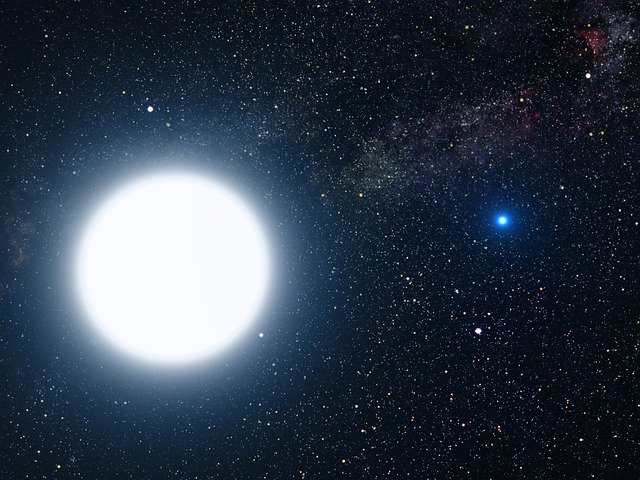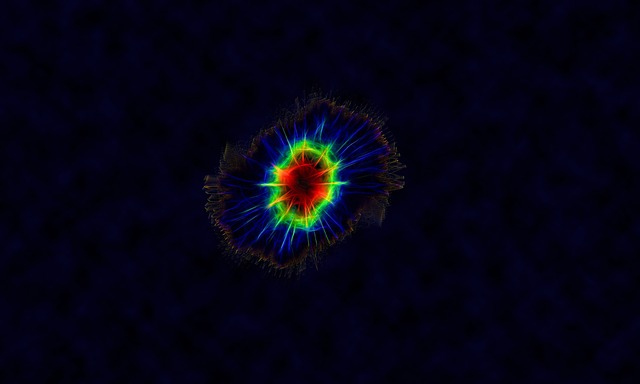*This post may contain affiliate links. This means we may make a commission if you purchase an item using one of our links*
The main differences between a nova and hypernova is that a nova is a bright explosion that occurs on the surface of a white dwarf that produces an excess amount of energy via nuclear fusion whilst hypernovae are arguably the largest explosions in our universe that occur when a star 30+ solar masses in size dies, leaving behind a black hole remnant.
There are various other differences between the two so continue reading for more information on both phenomena’s along with some of their similarities and distinct features.
What Is A Nova?
Table of Contents

A nova will occur when a white dwarf consumes too much energy from its binary companion star. This causes nuclear fusion on the white dwarfs surface, momentarily inducing a very bright energy outburst on the stellar remnant’s exterior.
When the surface of a white dwarf heats up to around 20,000 degrees Celsius the nuclear fusion process will activate, allowing it to act as if it were the core of an active star again.
The energy produced is significant, where it ejects resources in the region of 100,000 times more powerful than the white dwarfs typical cycle.
This excess energy needs to be ejected out otherwise it wouldn’t be able to conserve its form. That’s why the exterior explodes creating what we now refer to as a nova explosion, an explosion that has been observed to increase in brightness over the course of a few months.
Some white dwarfs tend to have nova outbursts a few times a century, while others are rarer. Ultimately for the explosion to occur, it will depend on how much hydrogen can be provided by a white dwarfs red giant companion star.
Although not the most commonly observed cosmic activity, scientists often find roughly 40 new novas every year in the Milky Way, which does imply that billions of nova explosions likely happen every year throughout the cosmos.
What Is A Hypernova?

Hypernovae are supernova explosions but on steroids.
In essence your typical hypernova will produce explosions that are anywhere from 5 times to 50 times more powerful than a supernova explosion.
The typical hypernova will be formed after the death of star that is at least 30 times the mass of our Sun, where they will generally have enough mass after the explosion to form a spinning black hole surrounded by an accretion disc and two stellar jets traveling close to it at the speed of light.
These explosion are much rarer than your typical supernova as they tend only to be observed 5 times over a million year period but, when they do happen, they’ll often produce light that is 10 – 100 times the brightness of a supernova.
Considering supernovae produce light that is often brighter than entire galaxies, a hypernova explosion would be blinding.
Not to mention extremely powerful where in the theory one explosion, that would typically have remnants sticking around a few months, would be able to power Earth for a billion, billion, billion years!
After the explosion has settled, only a black hole will remain. This is quite a juxtaposition as arguably the most luminous showcase produced in the universe tends to create celestial objects that allows no light to escape it.
Similarities Between A Nova And Hypernova
Both novas and hypernovae are explosion that occur within a variation of star and are amongsth the brightest entities in our universe.
Of course one is still far brighter than the other.
Differences Between A Nova And Hypernova
As for the differences between the two, they include the following:
- A hypernova is the brightest most powerful explosion/end to star in our universe, whilst a nova is a much smaller explosion that occurs on the surface of a white dwarf.
- Hypernova can outshine entire galaxies and are roughly 100,000 to 1,000,000 times more powerful than a nova and as a result, significantly brighter than your average nova.
- A hypernova explosion only occurs when a star that is 30+ solar masses reaches is end.
- A nova will not leave behind black holes as remnants of the explosion whilst a hypernova will only leave behind black holes as remnants.
- A hypernova will shine for a similar length of time to that of a supernova, which typically would span a few months whilst a nova explosion can shine anywhere from a few days to several years.
Summary
Although both are a type of explosion, one is many magnitudes bigger than the other and also will leave behind the darkest and densest entity known to us.
As a result besides sharing the feature of being bright cosmic explosions, hypernovae are simply in a different league to your typical nova.

